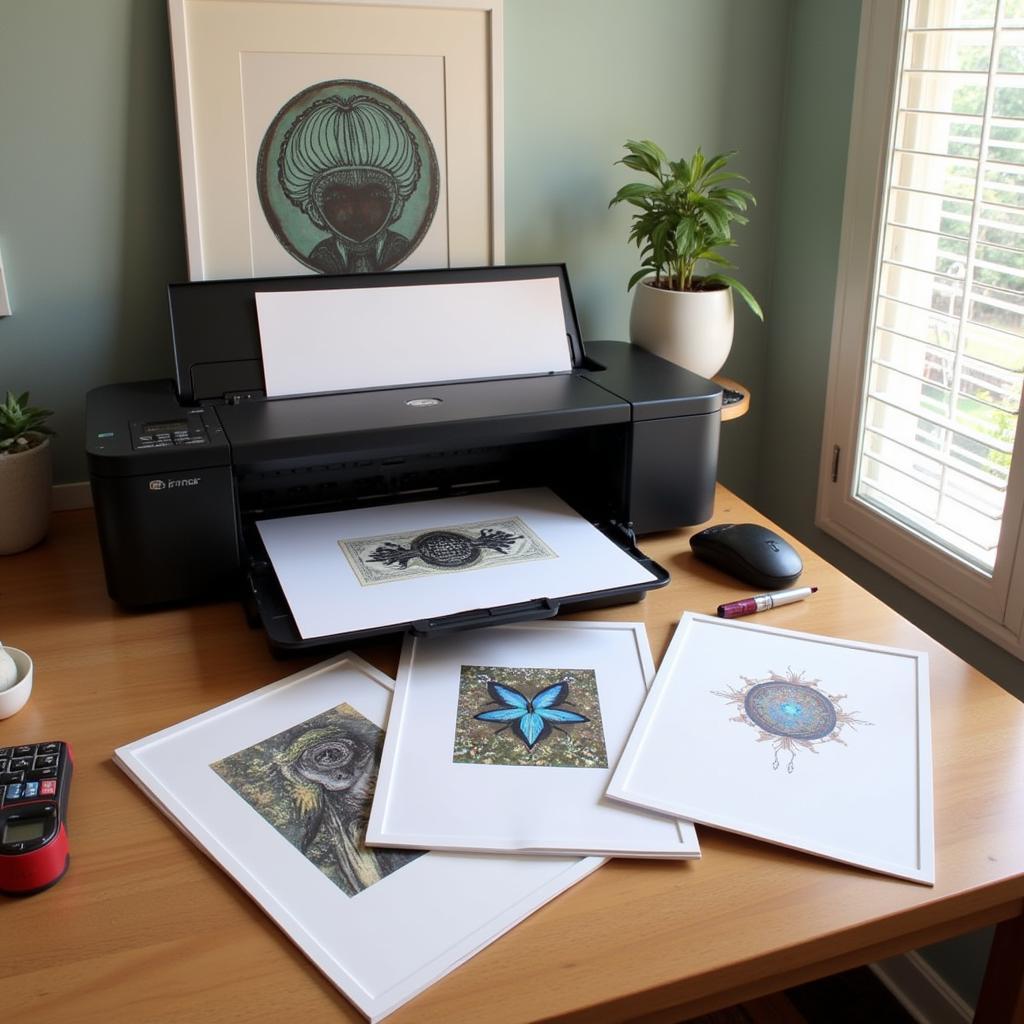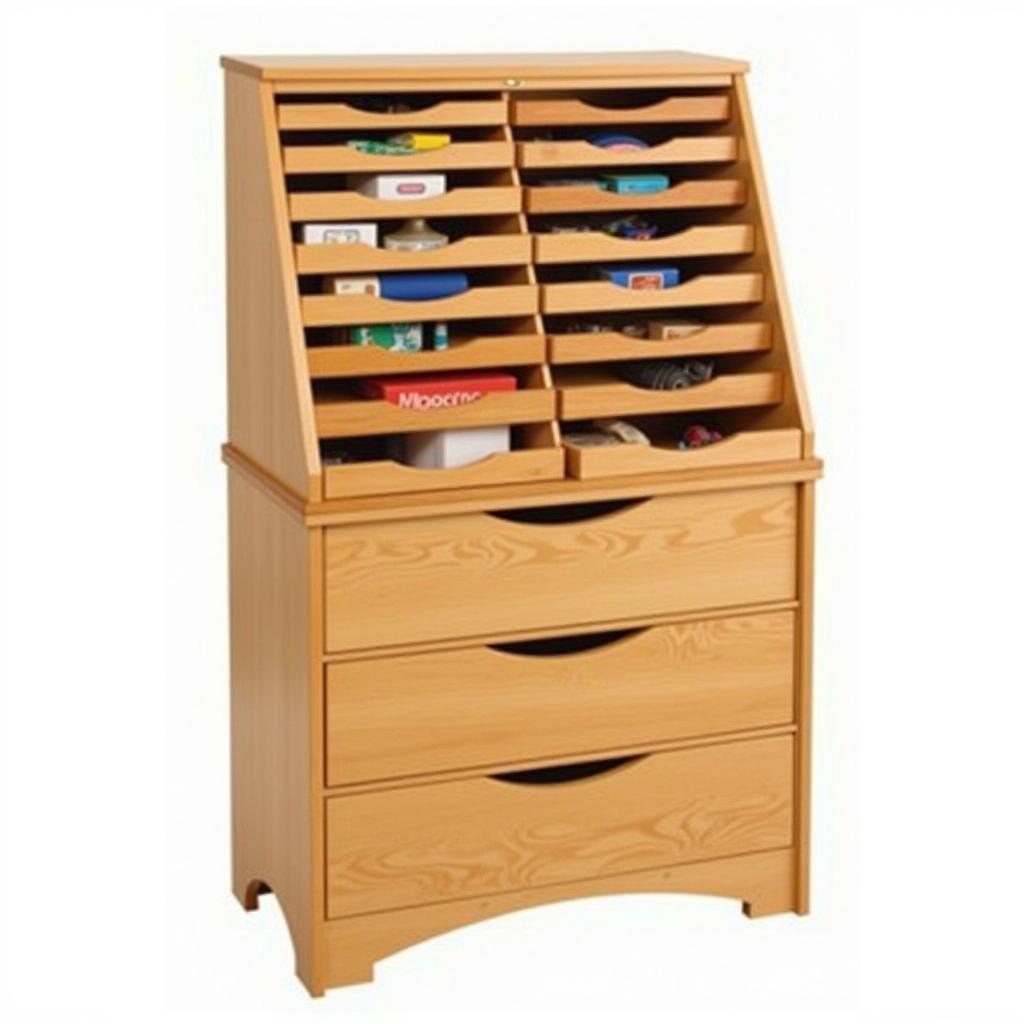Art Paper Printing: A Guide to Choosing the Right Paper
Art Paper Printing is more than just transferring an image; it’s about bringing your digital creations to life with the perfect texture, weight, and finish. Whether you’re a seasoned artist or just beginning your journey in the digital arts, choosing the right art paper is crucial for achieving the desired impact and longevity of your prints. From understanding different paper types to exploring the nuances of archival quality, this guide will equip you with the knowledge to elevate your printing process.
Exploring Different Art Paper Types
Choosing the correct art paper can dramatically affect the final look and feel of your artwork. Different types of paper interact with inks in unique ways, influencing color vibrancy, detail sharpness, and overall aesthetic. Let’s delve into some common art paper varieties.
Matte Paper: Smooth and Subtle
Matte paper offers a smooth, non-reflective surface, ideal for detailed artwork and illustrations. Its lack of gloss minimizes glare and allows viewers to appreciate the intricacies of your piece without distraction. Matte paper is also a popular choice for printing text-heavy artwork or pieces that require a softer, more understated presentation.
Glossy Paper: Vibrant and Eye-Catching
If you want your colors to pop and your images to shine, glossy paper is the way to go. Its reflective surface enhances color saturation and creates a vibrant, almost luminous quality. Glossy paper is particularly well-suited for photography and artwork with bold colors or high contrast.
Fine Art Paper: Elevating Your Prints
Fine art paper represents a premium category, specifically designed for archival quality and aesthetic excellence. These papers often come in various textures, such as watercolor or textured cotton rag, lending a unique tactile dimension to your art prints. Investing in fine art paper demonstrates a commitment to preserving your artwork for generations to come.
 Close-up of fine art paper texture showcasing its unique tactile qualities
Close-up of fine art paper texture showcasing its unique tactile qualities
Understanding Paper Weight and Thickness
Paper weight, often measured in GSM (grams per square meter) or pounds, significantly impacts the feel and durability of your art prints. Choosing the right weight is crucial for achieving the desired look and ensuring that your artwork can withstand handling and display.
Choosing the Right GSM for Your Project
A higher GSM generally indicates a thicker, more robust paper. For delicate artwork or pieces intended for framing, a heavier weight, such as 300 GSM or higher, is recommended. Lighter weights, around 150-200 GSM, might be suitable for less demanding applications like posters or flyers. You might also consider printing on best paper for printing art for guaranteed quality.
Balancing Weight and Printability
While heavier papers offer durability, they can sometimes pose challenges for certain printers. Ensure that your printer can handle the chosen paper weight to avoid jams or print quality issues. Testing different paper weights with your specific printer is always advisable. Looking for printing paper for art prints can offer specific solutions for your needs.
Archival Quality: Preserving Your Art for the Future
Protecting your art prints from fading and deterioration is essential for maintaining their value and beauty over time. Archival quality art paper and inks are specifically designed to resist the effects of light, humidity, and other environmental factors.
Acid-Free and Lignin-Free Papers
Archival papers are typically acid-free and lignin-free, which means they won’t yellow or become brittle over time. This ensures that your artwork remains vibrant and intact for decades to come. Many archival papers are also made from 100% cotton rag, a highly durable and stable material.
Pigmented Inks: Ensuring Color Longevity
Using pigmented inks is just as crucial as choosing archival paper. Pigmented inks are made of finely ground pigment particles suspended in a binder, creating a more lightfast and fade-resistant print compared to dye-based inks.
Maria Sanchez, a renowned printmaker and art conservator, emphasizes the importance of archival materials: “Investing in archival paper and inks is an investment in the future of your artwork. It’s the best way to ensure that your creative vision remains vibrant and impactful for generations to enjoy.”
What paper is best for art prints?
The best paper for art prints depends on the specific artwork and desired effect. Factors such as color vibrancy, detail, texture, and archival qualities influence the choice.
What is the standard paper size for art prints?
Common standard paper sizes for art prints include A4, A3, and larger sizes depending on the artwork’s dimensions.
Can I print art prints at home?
Yes, you can print art prints at home using a high-quality inkjet printer and appropriate art paper.
 Home art printing setup with printer and various types of art paper
Home art printing setup with printer and various types of art paper
Conclusion
Art paper printing offers a powerful way to transform your digital artwork into tangible, lasting pieces. By understanding the nuances of paper types, weight, and archival quality, you can elevate your printing process and ensure that your artistic vision shines through. Selecting the right art paper isn’t simply a technical detail; it’s a crucial artistic decision that significantly impacts the final presentation and longevity of your work. You can explore further options like lyric framed art or even custom birth flower art print for unique personalized gifts. For those interested in canvas printing, check out giclee art prints on canvas.
FAQ
- What is art paper printing? Art paper printing is the process of reproducing artwork on specialized paper designed for high-quality image reproduction.
- What are the different types of art paper? Common types include matte, glossy, and fine art paper.
- What is GSM in art paper? GSM stands for grams per square meter and refers to the paper’s weight.
- What is archival quality in art printing? Archival quality means the prints are resistant to fading and deterioration over time.
- How can I preserve my art prints? Use archival paper and pigmented inks to protect your prints from fading.
- What is the difference between matte and glossy paper? Matte paper has a non-reflective finish, while glossy paper is shiny and reflective.
- What is fine art paper? Fine art paper is a premium paper known for its texture, quality, and archival properties.
When you need assistance, please contact us by Phone: 02462573573, Email: danteum@gmail.com Or visit our address: Savico Megamall, 7-9 Đ. Nguyễn Văn Linh, Gia Thụy, Long Biên, Hà Nội 10000, Việt Nam. We have a 24/7 customer service team.





